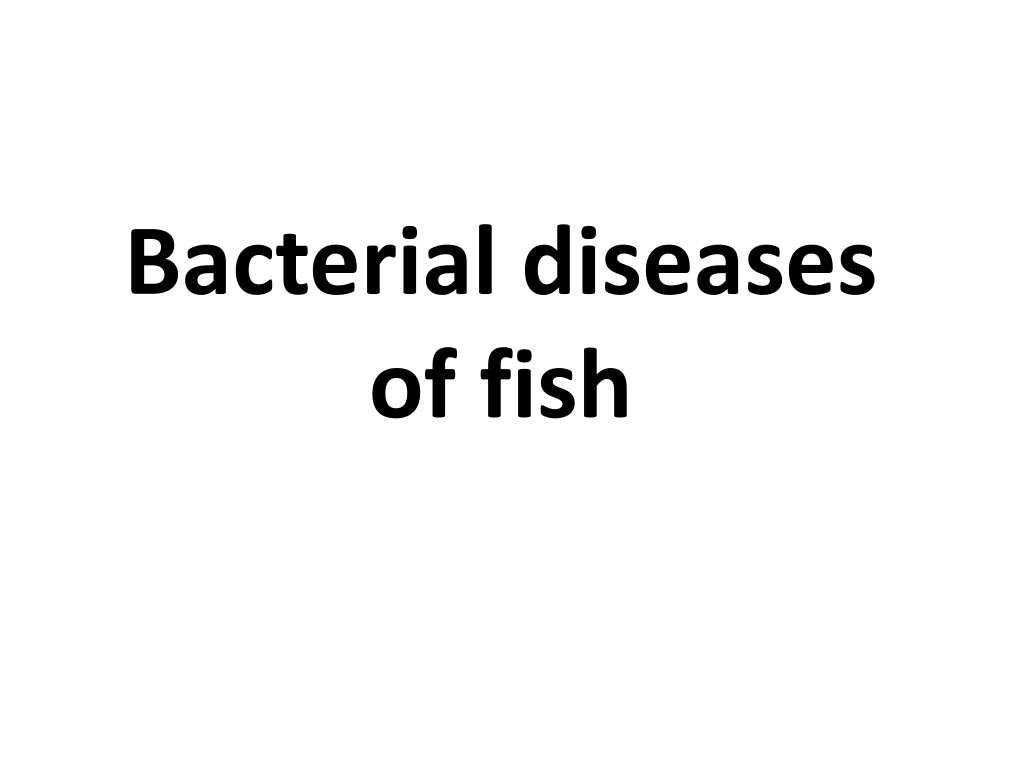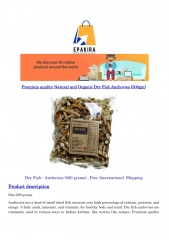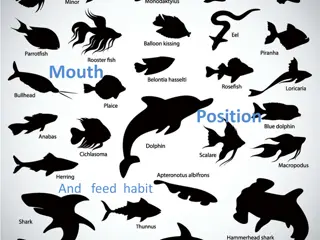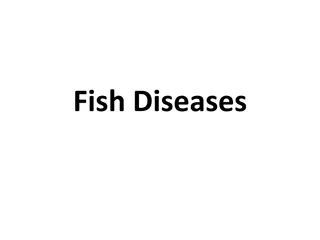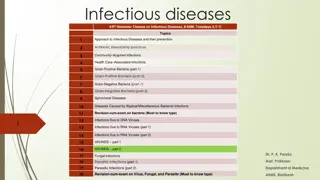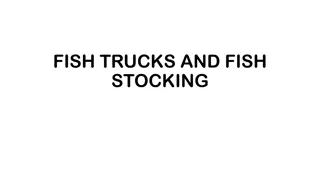Understanding Bacterial Diseases of Fish: Columnaris Disease Overview
Columnaris disease, also known as Saddleback disease, is a common bacterial infection in fish that is often brought about by poor handling and high stress levels. This disease manifests as tail and fin rot, leading to rapid fish mortality. The causative organism, Cytophaga (formerly Flexibacter), is a thin rod-shaped bacterium with gliding motion. Aquarists may mistake it for a fungal infection due to its cotton wool-like appearance. The disease is prevalent worldwide, with various environmental factors influencing its virulence. Proper diagnosis and management are crucial to prevent widespread fish infections.
Download Presentation

Please find below an Image/Link to download the presentation.
The content on the website is provided AS IS for your information and personal use only. It may not be sold, licensed, or shared on other websites without obtaining consent from the author. Download presentation by click this link. If you encounter any issues during the download, it is possible that the publisher has removed the file from their server.
E N D
Presentation Transcript
Bacterial diseases of fish
Columnaris disease ( Saddleback disease) The disease is brought in many cases by fish that have been badly handled, and often have been subjected to stress. Among predisposing factors often noted, is a sudden rise in temperature. And the disease most frequently appears, when water temperature is above 640F. There are some interesting relationships between the quality of the water, and the virulence of the disease. In waters with a total hardness of 33 ppm as CaCO3. The pathogen was found to be at its most virulent, while in distilled water with zero minerals it was determined to be non-pathogenic. This would indicate some need for certain minerals in order for the bacteria to reproduce and further re-infect fish.
A typical characteristic of the disease is a rotting of the tail and very often the fins, which if unchecked will lead quickly to death of the infected fishes. This is a virulent pathogen, which can infect the vast majority of fishes, and has been found to occur in almost all parts of the world.
Aquarists often refer to F. columnaris disease as fin rot or cotton wool disease , the latter name reflecting its physical resemblance to fine strands of cotton wool, which may lead inexperienced aquarists to misdiagnose the disease as a fungal infection.
Description of the organism The causative organism is a bacteria usually called today Cytophaga but previously was called Flexibacter and also Myxobacteria. Flexibacter columnaris and F. psychrophila are the most frequently isolated species of this genus in cyprinids and are commonly referred to as gliding bacteria.
The bacteria are thin rods, (0.5- 1.0 microns in diameter, and some 4-10 microns long). Their most noticeable feature is an unusual "gliding" motion, which is not observed in other species. In wet mounted specimens they can be seen piled up into large columns which have given one of the common names to this infection. Culture of the organism is best done and there is a culture media available called Cytophaga media, which is used for this purpose.
Clinical Pathology Skin. There will be necrotic lesions on the skin, which often are white/gray colored with an edging of red. These will quickly transform (in a day or two) into ulcers with have an orange/yellow color, caused by the bacteria decaying the underlying tissue.
Gills. Similar effects very typically occur on the gills. The progression of these ulcers, causes the fish to have great trouble with its respiration, and thus can quickly lead to fatalities. If the gills are examined, excessive amounts of mucous are to be expected.
Fins. Large milky patches can be seen quite easily on the fins of the fish, and this is usually an indication that the disease has progressed to a degree that treatment will become much more difficult. One typical sign is the appearance of a "saddle" shaped lesion usually around the area of the dorsal fin, and this occurs so often, that the name "saddle back disease" is often used in aquaculture to describe this infection.
Behavior. The fish will become very listless and lethargic, often hanging at the surface, trying to breathe there, although on occasion, the fish will rest on the bottom of the tank. Disinclination to feed is very typical and the fish will become anorexic. Respiration is often rapid, as the fish fights to overcome the damage done by the infection to its gills.
Transmission of infection The infection can be expected to spread most rapidly if water conditions are less than ideal, and factors that have been observed to enhance the pathogenicity are low oxygen values, hard alkaline waters, excessive nitrite levels, and even the presence of certain trace elements such as arsenic.
Treatment As noted previously, water quality plays a vital role in the prevention and cure of this disease. Prior to initial dosing of any medication to the aquarium, one should perform a large water change (30-50%) with a thorough gravel cleaning in order to remove excess detritus and waste from the substrate.
The exact causative agent needs to be identified and a suitable antibiotic identified. Some water-borne chemicals such as benzalkonium chloride (BKC) are effective. In the case of highly prized fish, e.g. some ornamentals, antibiotics may be effective, and the early stages of the infection can sometimes be treated with an antibacterial bath, e.g. copper sulphate.
Mycobacteriosis (Tuberculosis) (TB) Mycobacteriosis is a widespread, but rarely reported problem in cyprinids. Although fairly common in small tropical aquarium species, the disease is not so common in larger temperate cyprinids particularly those destined for the ornamental trade, e.g. goldfish and common carp. wild and farmed
Two species occur in fish Mycobacterium marinum and M. psicium. Aquarists often refer to the disease as fish tuberculosis (TB), because the bacteria belong to the same genus as the one causing human tuberculosis (M. tuberculosis). Note that this disease is of zoonotic importance. Transmission from infected fish to humans is rare but fish handler s disease or fish tank granuloma is a condition that can occur in humans as a result of the skin infection from these bacteria. Gloves should be worn when handling suspect or infected fish or when cleaning contaminated surfaces.
In carp, the disease apparently takes on the cutaneous form, rather than the visceral form usually associated with warm water aquarium fish. Infected fish appear emaciated, stunted and show loss of appetite. Areas of light grey discoloration are present on the body surface and can vary from focal areas of scale loss to open ulcers. High water temperature would appear to be necessary for infection. It is thought that fish acquire infection mostly via the oral route, by consuming detritus that contains bacteria shed from the ulcers of infected fish, or by foraging on infected corpses.
Description: infectious Tuberculosis Mycobacterium thick rod, between 2 and 12 micrometers in length. The optimum temperature for the bacterium growth on the nutritional media is 25 C (77F). It affects fish s internal organs. The pathogen gets into the aquarium from a fish-pond with feed, plants and gravel if the latter has not been boiled or tempered as well as with fish, plants, water and equipment is an disease caused by pisicum. This is a gram-positive non-motile from a contaminated tank.
Clinical Pathology Affected fish show loss of appetite, constantly lose weight, and hide in the corners of the aquarium. They will have a curved spine, hollow belly, and sunken protrude through the skin and scales. Fish will die within a month. An autopsy will not reveal any abnormalities organs. Sometimes yellowish granules(round grains) on the liver and eyes. Bones in the internal small there will be kidneys.
Diagnosis Diagnosis is based on observation of clinical signs, histopathology and microbiological examinations.
Prevention and treatment Prevention is through maintaining a healthy environment for your fish, providing them with a nutritionally balanced diet, avoiding overcrowding as well as maintaining high water quality. Quarantine new fish for three months before introducing them into the main tank. During this period they should be closely observed. There is no fully effective treatment therefore the best course is to cull and disinfect premises. 10,000ppm chlorine or 60 85% alcohol do kill mycobacteria. It is possible to try to treat valuable fish in a separate tank by adding into the water one of the following medications: doxycycline or monocycline (30mg per 10L) oxytetracycline (150mg per 10L) tetracycline (0.2g per 10L).
